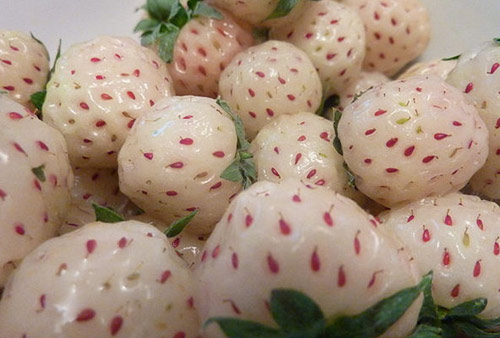现在有对各种各样东西恐惧的人群,恐高症、恐巨症、恐尖症、小丑恐巨症、数字13恐惧症。这不,还有trypophobia(密集恐惧症)。如果你患了密集恐惧症那可惨了,看着草莓说不定都会害怕哟!

Trypophobia is a revulsion and fear of objects with clusters of small holes – think beehives, ant holes, and in particular lotus seed heads.
“密集恐惧症”就是指对有密集小孔的物体感到恶心和恐惧,类似物体有蜂窝、蚁窝,尤其是莲蓬。
The name for this phobia was only coined in 2005, but there are a surprisingly huge number of people who suffer from this strange fear. Unfortunately for sufferers of this phobia, the Internet has found much joy in photo shopping lotus-pod designs onto various body parts. Google if you dare.
这种恐惧症在2005年才作为一个新名词诞生,但患症人群却数量庞大。对患症人群而言不幸的是,网络上到处都是“蜂窝化”的人体影像处理。不信可以谷歌一下。
British academics Arnold Wilkins and Geoff Cole, who claim to be the first to scientifically investigate trypophobia, believe the reaction to be based on a biological revulsion, rather than a learned cultural fear. In an article, they discussed that the reaction is based on a brain response that associates the shapes with danger. The type of shapes that elicit a reaction were stated to include clustered holes in skin, meat, wood, plants, wounds and bubbles and that observing these shapes made some individuals state that they felt that their skin is crawling, shudder, feel itchy, experience panic attacks, sweat, palpitate and feel physically sick. Some stated reasons behind this fear are that the holes seem "disgusting and gross" or that "something might be living inside those holes".
自认第一个通过科学研究调查密集恐惧症的英国学者阿诺德• 威尔金斯和吉尔夫•科尔认为,这样的反应时基于生理上的反应,而并不是文化上的恐惧。在一篇文章里他们讨论认为,这样的反应来自于大脑对于形状和危险的联结。能激发这样反应的一般都有很多密集的小孔,比如皮肤、肉类、木头、植物、伤口和泡沫。对于一些人来说,看这样形状的物体会让他们觉得皮肤正在蠕动、战栗,觉得痒痒的,有时还会恐慌、出汗、悸动并且身体不适。有人认为出现这种恐惧的原因是这些洞看起来很恶心,感觉会有生物在里面活动。
(中国日报网英语点津 实习生马歅卓 编辑:陈丹妮)